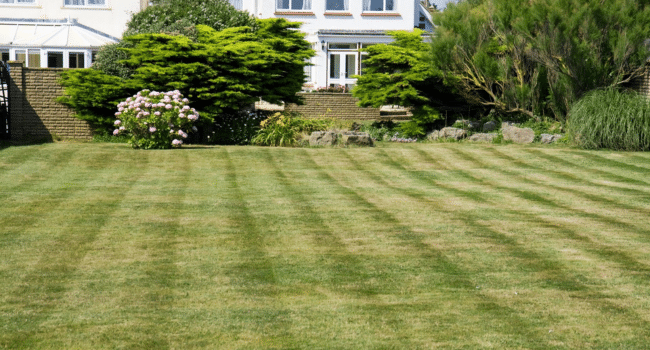Table of Contents
There’s nothing more frustrating than seeing patchy, uneven growth in your lawn—one area is thriving while another looks like a barren wasteland. Whether your grass is thinning out due to poor soil, lack of nutrients, or harsh weather, the good news is that the right fertilizer can help bring it back to life. Let’s go over what causes patchy lawns and how to restore them to a lush, even green.
Why Does Your Lawn Have Patchy Spots?
Before you start throwing down fertilizer, it’s important to understand what’s causing those thin or dead patches in the first place. Some of the most common culprits include:
- Nutrient Deficiency: Grass needs nitrogen, phosphorus, and potassium to grow strong. Without these, certain areas of your lawn may struggle to thrive.
- Compacted Soil: If your soil is too hard, air, water, and nutrients can’t reach the roots, leading to sparse growth.
- Uneven Watering: Some areas may be getting too much or too little water, creating inconsistencies in growth.
- Pet Damage: If your dog loves to mark the same spot, the high nitrogen in urine can burn the grass.
- Sun and Shade Differences: Some grass types need full sun, while others prefer shade. If your lawn is a mix, you may see uneven patches.
Choosing the Right Fertilizer for Patchy Grass
The best fertilizer depends on what’s causing your lawn problems. Here’s how to pick the right one:
1. If Your Lawn Lacks Nutrients
A balanced fertilizer (like 10-10-10 or 20-10-10) will provide the nitrogen, phosphorus, and potassium your lawn needs. These numbers represent the percentage of each nutrient, and a higher first number (nitrogen) helps boost green growth.
2. If Your Soil is Compacted
A fertilizer alone won’t fix compacted soil, but aeration followed by fertilization can make a huge difference. Core aeration allows nutrients to penetrate deeper, giving your grass better access to what it needs.
3. If You Have Pet Damage
Look for a high-phosphorus fertilizer to help encourage root repair. You may also need to water down affected areas to flush out excess nitrogen from pet urine.
4. If Your Lawn Has Uneven Sun and Shade Exposure
Some areas of your lawn may need different fertilizers. Shady spots benefit from lower-nitrogen formulas, while sun-exposed areas need more nitrogen for thicker growth.
How to Apply Fertilizer to Fix Patchy Grass
1. Test Your Soil First
A soil test can help determine if your lawn is lacking in any key nutrients. Many garden centers offer affordable DIY test kits.
2. Choose a Slow-Release Fertilizer
Slow-release fertilizers provide a steady supply of nutrients over time, preventing sudden spikes that can cause uneven growth.
3. Apply at the Right Time
For the best results, fertilize in early spring and fall. In regions with seasonal extremes—like lawn fertilization in Utah, where temperature swings can be drastic—it’s important to follow seasonal guidelines to avoid stressing the grass.
4. Overseed Bare Spots
After applying fertilizer, add grass seed to fill in thin or dead patches. Make sure to choose a seed blend that matches your existing grass type.
5. Water Properly
A patchy lawn may also be suffering from inconsistent watering. Aim for about an inch of water per week, either from rainfall or irrigation, and make sure the soil stays moist but not overly saturated.
Conclusion
Fixing a patchy lawn takes time, but with the right fertilizer and a little patience, you can bring your grass back to life. By understanding the cause of uneven growth and using the right nutrients, you’ll be well on your way to a healthier, fuller lawn. Whether you’re dealing with compacted soil, nutrient deficiencies, or pet damage, a targeted approach to fertilization will make all the difference.
